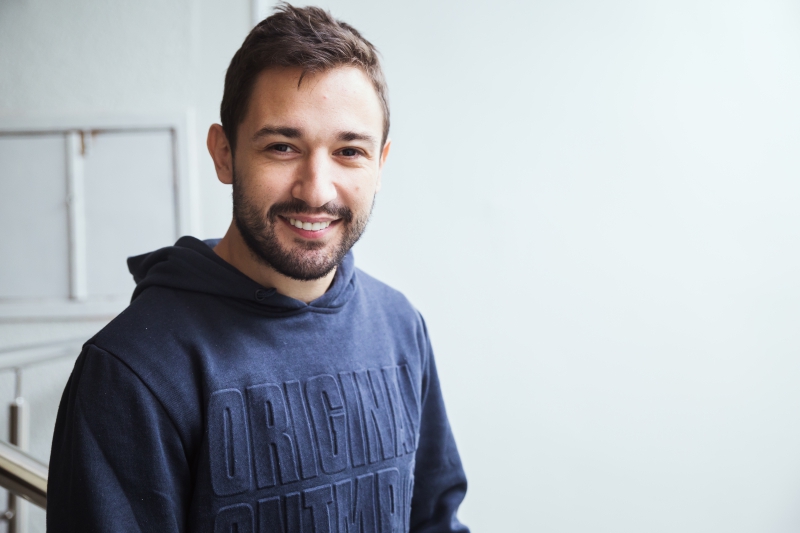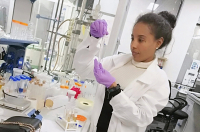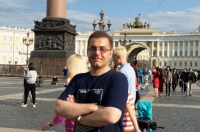Michel Doumit came to ITMO University from Lebanon. He graduated from the Lebanese University with a Master’s degree in Fine Art. He is inspired by many of the 20th century’s art masters like Picasso and Giacometti and has participated in four collective art exhibitions and a solo exhibition in 2017. He now journeys through the world of Art & Science in order to to gain some insights into the modern world and use that knowledge in his artistic work.
The way technology has shaped our lives in the past decades is evident and we have gotten to a point where it seems almost impossible to live a normal life without these new advancements. Twenty years ago it wasn’t even necessary to have a mobile cellphone at all times but now our devices bring to the table all kinds of new interactions with the external world. Smartphones, smart watches, smart TVs – they all make our lives easier in some ways and more complicated in others; but we must ask ourselves: how does an artist taught in the classical mediums act upon this new technological revolution?
“Art has always been a way of getting to know the world and my relationship with it” Michel says. “So in order to understand myself and the world, I need to develop my work and to learn how to incorporate it with technology. And that’s where I need to learn more about technology. “
For Michel, it’s not about leaving the classic arts behind, but about the value and knowledge we can get from them to improve.
“It’s not about forgetting them,” he explains. “I’m certain that we should learn about them. I believe that’s the right road, and we should follow it to find our way. It’s important to remember the basics to move forward, we shouldn’t forget the wonderful rhythm expressed by the classic arts. This rhythm pushed modern and contemporary art into experimenting and expressing more feelings, and personal research”
Michel feels that getting away from this wave of technology is almost impossible and that, in a time where you are bombarded with notifications about new products or social news, we need to remember how to feel and perceive the world by being still and just observing.
“Let’s not forget that modern technology is a contextual term, meaning it changes throughout time,” he notes. “We take for granted numerous objects in our life and forget how incredibly far we have advanced. Something as simple as being able to record audio on our phones can be taken for granted now, but not too long ago we couldn’t even record audio at all. We interact with objects that came because something that existed earlier inspired it and there was another artifact even earlier that inspired that one; we are historical being and therefore we must be in touch with our history.”
What is Michel’s advice to those who want to start in the world of art?
“This is a difficult question. I don’t know if I should give advice, but I will try and give a recipe. As I’ve said, art is personal: it’s feelings, it's a way of research. For me, the key to being a good artist is to learn from the past and the future. All history, not only classic art or modern art, but also Egyptian, Sumerian, Etrurian, etc.
“The majority of the great artists, like Picasso and Giacometti, were inspired by old art. After learning from the past, we can talk about the future. As an artist, you should try to see yourself in the future. You should learn about things like technology even if you don’t like them.
“You must be in tune with your present. You should read about it and research it, and try to find a way to combine your art with technology. The most important thing is to be yourself and to always be in “research mode” because art is not something aesthetic, it’s a way of living. A way of thinking. Hard work and dedication will lead you to be the best.”
Written by Ethan Avila



